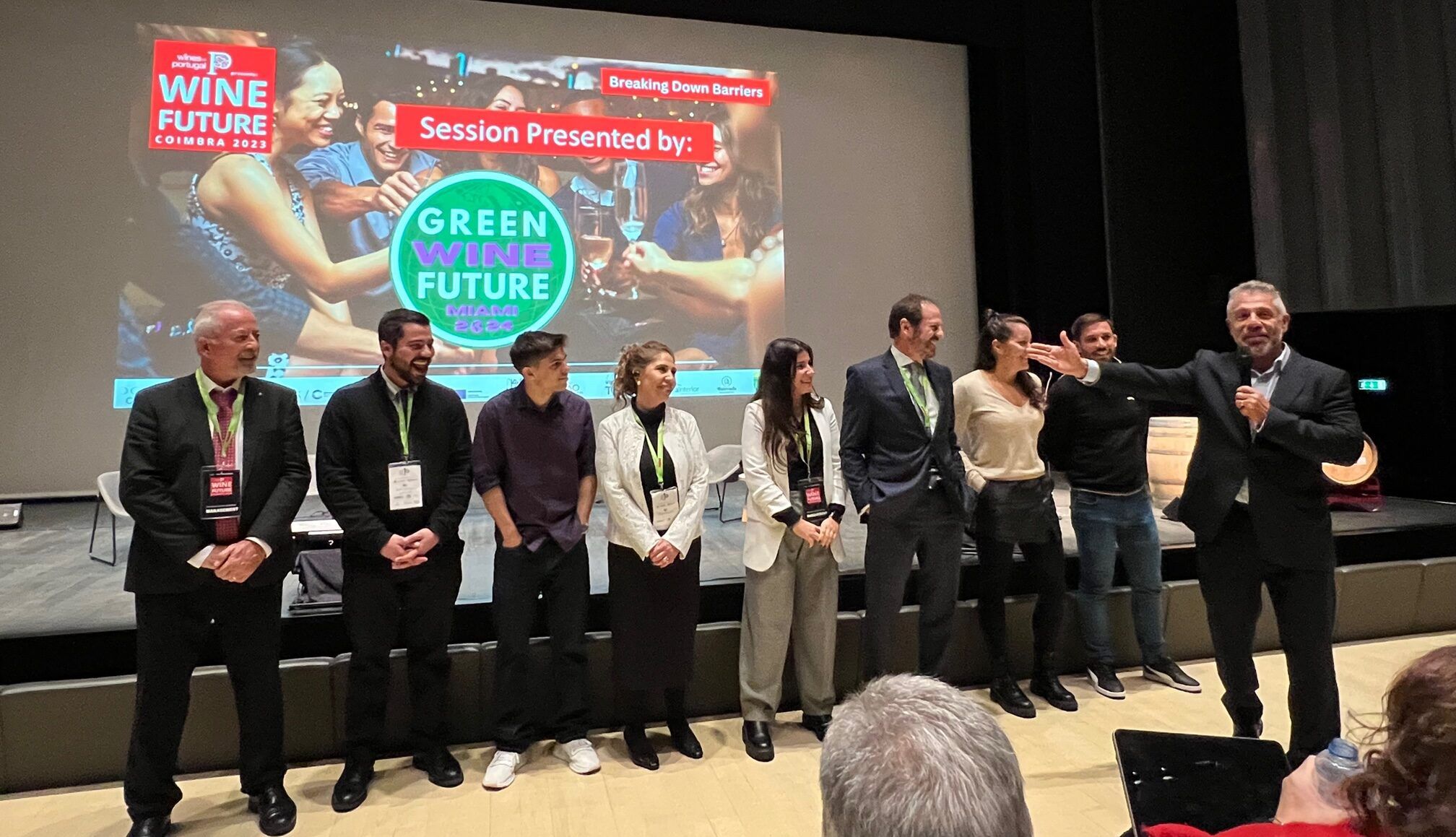Coimbra in the heart of Portugal was the setting for Wine Future 2023 as leading figures from across the industry picked up the clarion call from event organiser, Pancho Campo, and lead sponsor, Wines of Portugal, to come together and plot the way forward for the rest of the sector to follow.
When the world of wine first came together for the inaugural Wine Future event in Logroño, Rioja in November 2009 no-one quite knew what to expect. It was the first time any wine business event on this scale had been attempted before.
We might all make wine around the world, but are the issues facing Californian producers the same as those in Italy, or France? Do wine sales trends in, say, Tesco in the UK have any bearing on what is happening in Hong Kong or Shanghai? Should wine producers in Europe take any notice of what is happening in making wine in Australia and across the southern hemisphere?
As it happens they should, but the world seemed a much bigger place in 2009 when the word “digital” sounded as alluring and foreboding as we might consider artificial intelligence today.

Pancho Campo, founder of Wine Future, introduces the 2023 edition of the event in Coimbra in Portugal
The first big takeaway from Wine Future 2023 is how many topics, issues and debates are as relevant today as they were in 2009. We might be older, wiser and more experienced, but the wine industry is still faced with so many of the same challenges.
Pancho Campo, founder of Wine Future, said at the opening of this November’s event in Coimbra that its ultimate goal remained the same as it was in 2009 – “to find solutions and inspire” the rest of the industry to take action.
In fact, looking at the agendas and conference topics from 2009 and they are not that different from what was discussed in 2023. In 2009 the big headline issues were the health lobby, drinks legislation, packaging, climate change, falling wine consumption, personalising wine choices, marketing, communications and social media.
All of which were not only front and centre at the 2023 event, but, as Campo said, arguably even more challenging now in face of the global cost of living crisis, international anxiety on the back of the wars in Ukraine and the Middle East and a long term fall in wine consumption. In fact the 2009 Wine Future marked the highest consumption of wine at around 250m hectolitres (2008) compared with 232m h/l in 2022 – a drop of 7.2% (OIV & Wine in Moderation figures).
A step forward – a step back
The biggest star of the show in 2009 was arguably Gary Vaynerchuck, a then relatively unknown fast-talking New Yorker, who opened everyone’s eyes to the potential power of social media and warned all the producers in the room who admitted to not having a website that they would not exist in a few years time if they did not.
Fast forward 15 years and the quality of wine all over the world might have taken a big step forward, but how we talk, communicate and market wine has not. In fact, the arrival of digital and social media has, arguably, only fast tracked just out of touch and disconnected the wine industry is to the average consumer. A situation that has got a lot worse by the explosion in other beverage options, and the huge rise and interest in zero and low alcohol alternatives.
Categories that are all reaching the parts of the consumer that the wine industry is not – and global consumption of wine is down as a result.

Georgia Panagopoulou, aka @Wine.Gini, was able to explain how best to work with wine influencers and how effective partnerships can be with wine brands and producers
For Gary Vaynerchuck in 2009 we had a panel in 2023 made up of leading influencers Luke Flunder, with 200,000 followers on TikTok (@lukeflunder), Georgia Panagopoulou, aka @Wine.Gini with 120,000 Instagram followers and Cristina Mercuri (cristinamercuri_wine) with 20,000+ followers on Instagram. Each with their own vision on how to make the most of social media and to stop talking wine speak.
Individuals, with one or even two feet outside the traditional wine sector, with professional marketing, digital and social media skills who have seen wine as a way to use those skills to create relevant content for their large audiences – and run successful commercial businesses too.
Their underlying message was clear. For social media and digital marketing to work it has to be in line with, and part of, your overall communications and sales business plan, and not just bolted on separately, said Delphine Porte, digital and influence manager at Gérard Bertrand wines.

Delphine Porte, digital and influence manager at Gérard Bertrand wines, looked at how it is working with influencers to help tell its stories
Let me tell you a story
Time and again this year’s Wine Future returned to the theme of storytelling. There is no point in producers doing wonderful things in the vineyard and in their cellars, if they don’t know how to share that story in a way that is going to excite and inspire people to buy the wines they make.
Why do we continue to invest in and see wine education as the answer to all our problems? Surely it has to be a combination of education for those that are genuinely interested in wine and all it can offer, but, crucially, the art of storytelling and bringing the world of wine to life to a whole new generation of younger drinkers that are simply not interested in hearing the story that producers, retailers, wine merchants are currently telling.
Effective storytelling means making an emotional connection with your audience. In just the say way it works in a Stephen Spielberg film, or song by Adele.
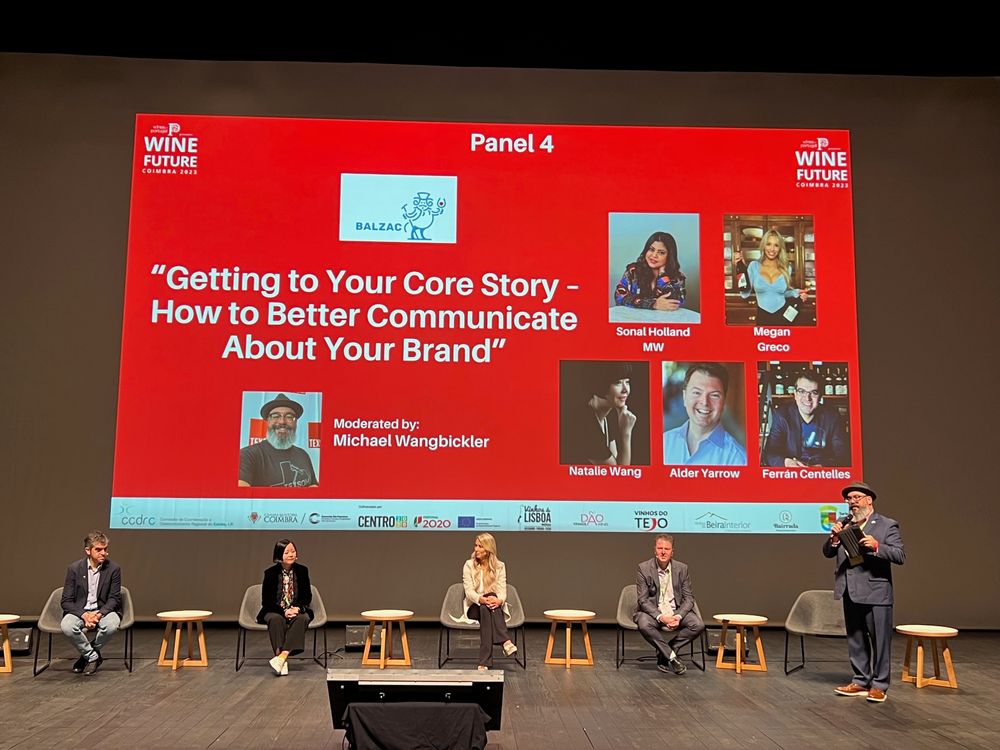
Wine Future 2023 featured a number of sessions exploring how the wine industry still needs to find better ways to tell stories and find new ways to connect with an increasingly disengaged audience
US wine writer, Alder Yarrow, who also runs his own branding and marketing consultancy, says you only have to look at neurosience to see the power of storytelling and how our brains are “wired” to “transport” us out of our day-to-day lives to exciting new worlds created through the skill of story telling.
If we can find ways to connect emotionally, or generate empathy then our brains secrete a “love hormone” – similar to the connection you have smelling the head of a new born child.
“It is scientifically proven to make us want to give our money to other people,” he said.
That’s the power that true brands have, he adds. The ability to draw people in through the experiences they have with your brand. “Brand are built with stories. It’s what makes them mean something. You have to make your brand meaningful, not meaningless.”
Work out what it is about your business, your wine, your story that is meaningful to you and focus in on that, he said.
Ferran Centelles, of Bullipedia, part of the El Builli Foundation, agreed. “There has to be an emotional connection to tell a story. Don’t talk about being an organic winemaker. You have to make someone emotionally connected to your story.”
He urged wine businesses to ban referring to “what” they do and using “this is-style” factual explanations. Instead start explaining “why” you make wine in the way you do. That immediately changes the dynamic from lecturing someone about what you do, to “explaining” it to them in a way that opens up a two way conversation.
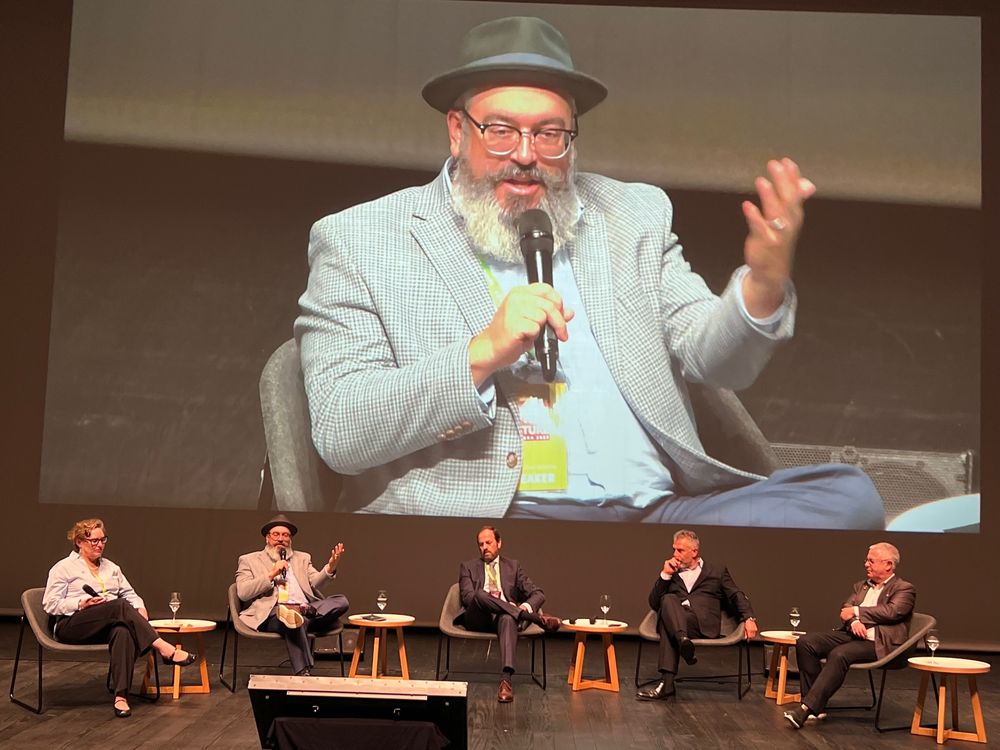
Michael Wangbickler of Balzac says producers need to make an emotional connection with their target audience and not just talk about the wines they make
Michael Wangbickler, of Balzac, a wine branding and marketing agency, said wine producers need to remember they are not special simply because they make wine. All wine producers do that. “You need to find an emotional connection in order to get people to connect with you.”
It is what Yarrow describes as learning how to have a “bedside manner”. Doctors learn all there is to know about medicine and working out what is wrong with us, but they don’t get taught how to have a good “bedside manner”. Wine companies have the same conundrum.
“You have to see this as an investment. You invest in barrels, and in cellars, but not how to tell your story,” he added.
“It’s an investment that is absolutely crucial in selling your wine. Making wine is one thing. Selling it is another,” said Wangbickler.
Power of influencers
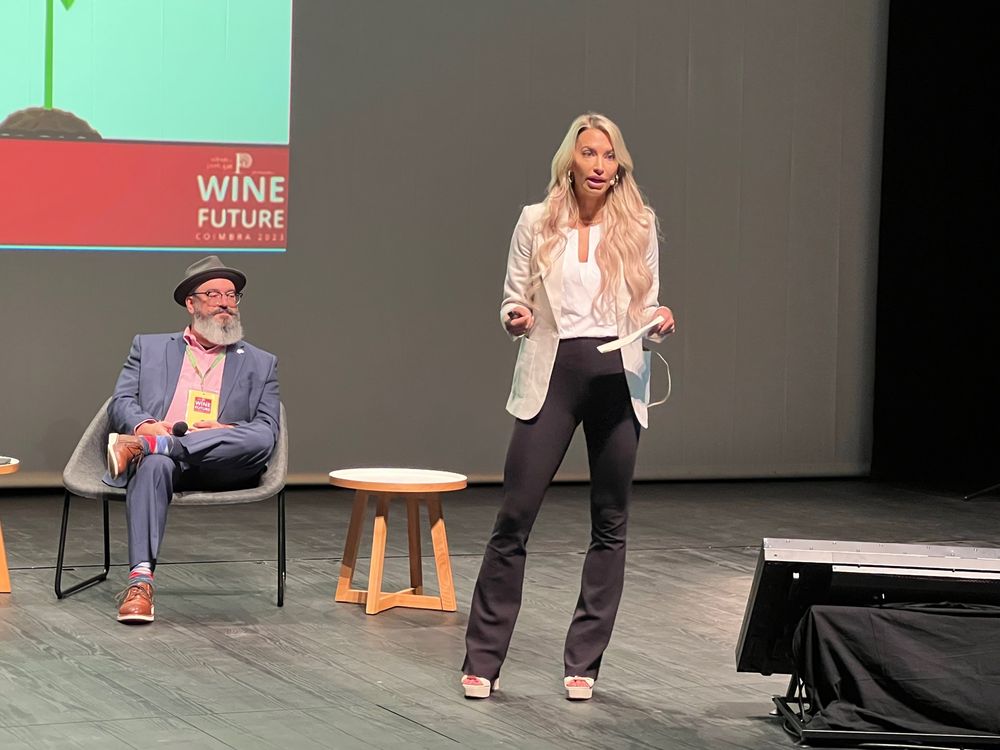
Megan Greco says influencers can help bring new and younger people into drinking wine
Which is why influencers are becoming such an important part of a brand’s marketing mix, says Megan Greco who has a 50k following on Instagram with her @ifyouproutit brand.
“Influencers are helping people connect with wine for the first time. They are helping simplify wine and make it approachable in a fun and interesting way,” she says.
Look at social media as your “window” to the consumer, added Porte, with each platform giving you different ways for them to connect and trust you.
Used well then TikTok can break down so many barriers, said Flunder, who has built up his 200k following in less than two years with quick, fun, in your face, simplified wine information and “Out of 10, in less than 20 seconds” recommendation videos (take a look here).
“What bit of a wine story is going to attract a Gen Z or millennial drinker?” he asked. “You have to really listen to your audience. Read the messages that people send and find out how much information they want. Be real. Authentic. Be yourself.”
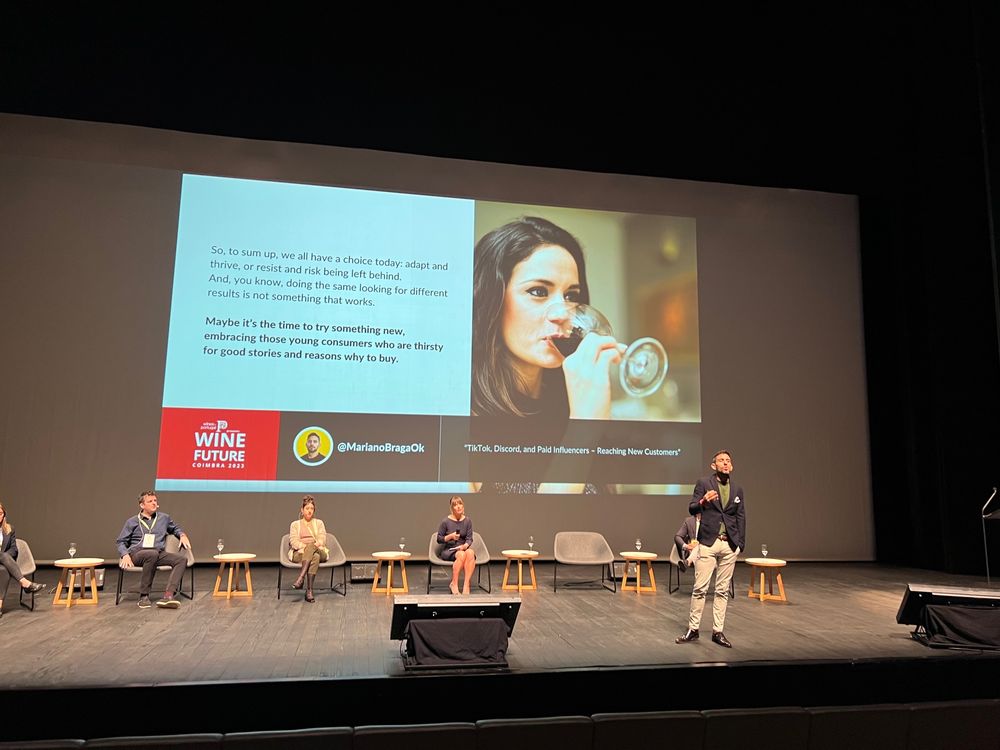
Mariano Brago says “young consumers are thirsty for good stories” – you just need to know how to tell them and which platforms to promote them on
Using the right platform is key, said social media consultant, Mariano Braga. Want to reach Gen Z customers? Don’t waste your money on TV and traditional media. Podcasts are fast becoming preferred “escape route” to an age group that is feeling stressed and anxious by providing a safe space to explore personal topics.
“There is a big shift in consumer behaviour. It’s a giant wave and we can choose to surf it. Young consumers are thirsty for good stories,” he added. “Don’t be afraid to explore new avenues.”
This is the sort of content that people are listening and buying into that other drinks brands and categories are telling them. We need to better understand the types of story, and how they are told, that are cutting through to all those non-wine drinkers? Are you looking, listening and watching what is being said? Or sticking to the tried and trusted, but failing mantra of repeating tired and wasted tasting notes that mean nothing to your target audience.
Trust and authenticity
It’s all about building trust with your audience and the right influencers can help do that, claimed Panagopoulou. They have built up a community of followers who trust the content you share as if it was coming from a friend. “It is storytelling that makes brands more memorable,” she said.
Partnering up with trusted brands in other sectors, particularly in luxury retailing and fashion, can also help cut through to target customers, said Dr Liz Tach MW, president of the Wine Market Council in California. “It’s a chance to do fun and different things.”
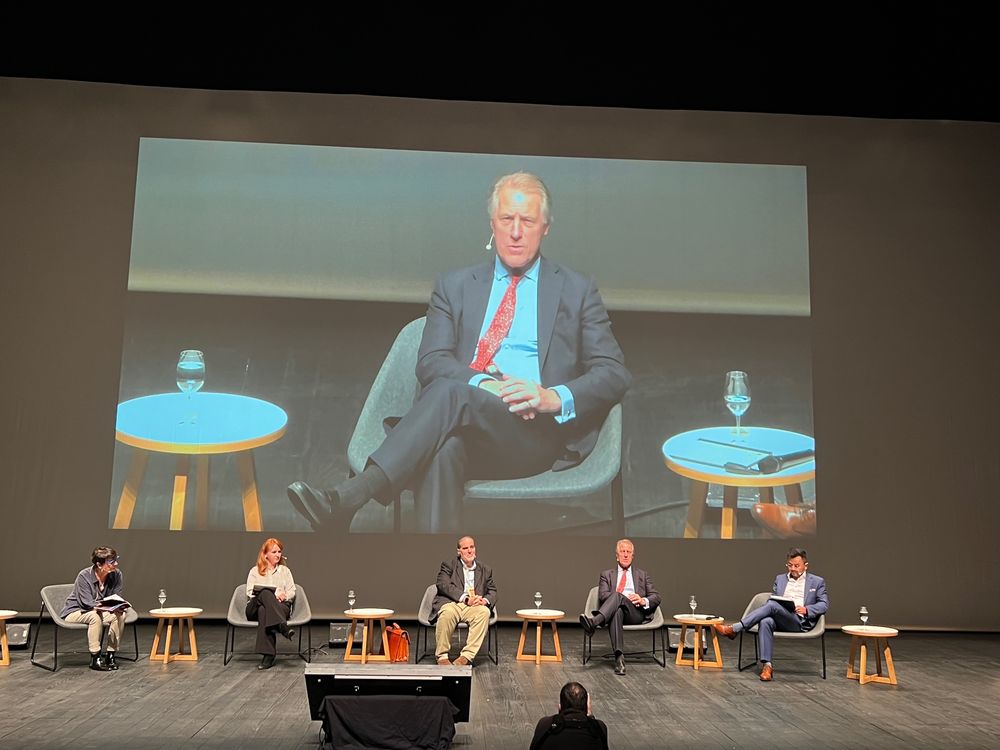
Adrian Bridge of the Fladgate Partnership was able to first explain how its new World of Wine tourism initiative in Porto is helping to bring Port to life to a new audience but also then show it to the Wine Future delegates as part of a special tour of the site
People are also increasingly looking for “authentic experiences” they can enjoy for themselves and then share with friends on social media, said Adrian Bridge, chief executive of the Fladgate Partnership. He was able to share how it has been able to open up the rather stuffy image of fortified wine to thousands of tourists in Porto through its new WOW (World of Wine) by making it a true experience to visit.
“People want to connect with an authentic experience. The story and detail and how your present it is absolutely crucial,” he says.
Digital necessity
Natalie Wang, founder of Vino Joy, the news and content platform focused on Chinese and Asian wine markets, says it is not possible for a wine brand to be successful in China, in particular, without having an effective digital strategy. In fact, you can’t live, work and function sociallywithout being on WeChat as it is the platform that allows you to do everything from buy train tickets, manage your finances, to ordering a glass of wine in a bar. Which is why it has 1.3 billion users.

Natalie Wang of Vinojoy examined the explosion in specialised new social media platforms in China that wine producers now need to be aware of and targeting to reach potential new drinkers
But there are now a vast array of new specialised digital platforms – including those just for food and drink – that are now operating in China based on what sort of tier city you are in. Platforms the majority of wine brands have yet to fully understand, never mind work out how to use.
“Wine brands are mainly on WeChat. There is a great absence of wineries on all the new non WeChat platforms. To work in China you have to digitise your strategy and work out what is the right platform for you,” she stresses.
Justin Noland, senior director of DTC marketing and e-commerce at Treasury Wine Estates, saying having a digital strategy is not just about being on social media, but should cover every aspect of your business and the content and information you are providing that reaches someone on a screen. It is that level of joined up digital strategy that is going to be essential for businesses to operate in the future.
“It has to be comprehensive. If you can’t do that, then don’t do it all. You can’t just do a little bit of it. You can’t invest in influencers and then not back it up,” he stressed. “You will only see ROI on your influencer, social media strategy if is part of a comprehensive digital strategy.”
A digital strategy means investing in collecting, analysing and then understanding what your data is telling you about your customers and what they are doing, how they are behaving and who your future customer might be and how you are going to connect with them, he added.
It means creating the right kind of content that is going to be relevant to the right audience. “Some will care about your vineyards, others won’t. You need to work out what content you are missing and then go and create it.”
Smaller world
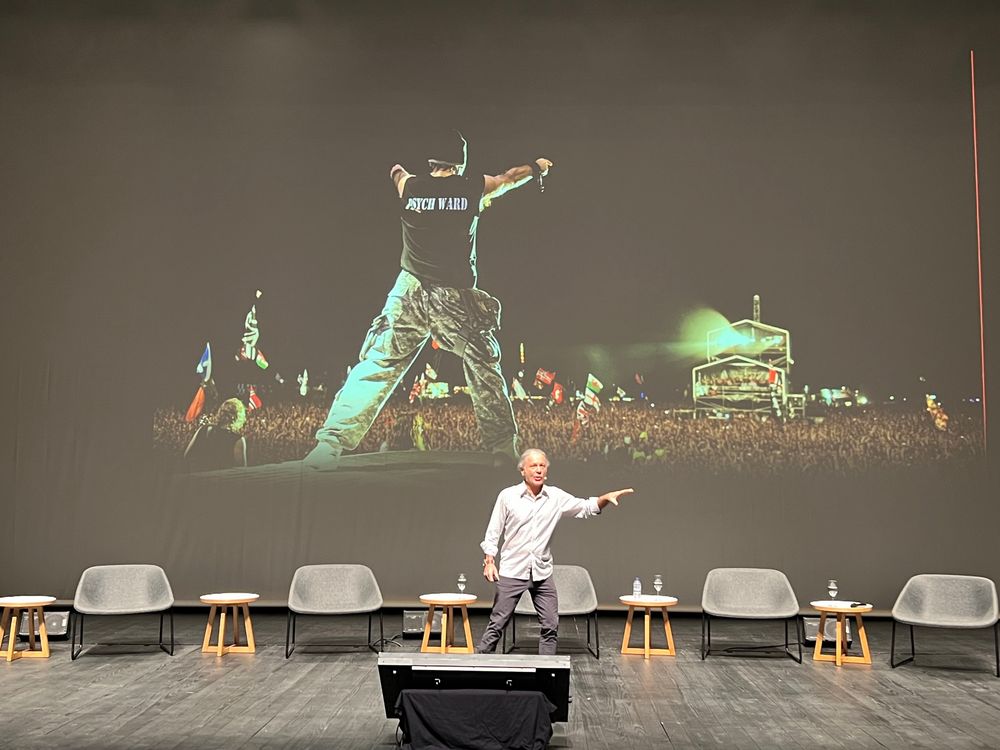
Wine Future is a rare opportunity in the wine industry to attend a global conference that brings in high profile keynote speakers from outside the sector to share their expertise – including an inspiring, but off beat talk from Iron Maiden’s lead singer Bruce Dickinson (The Buyer will be sharing his insights in an article later in the month)
Wine Future 2023 was also, sadly, noticeable by who was not there – particularly compared to the numbers of business leaders, big branded wine companies, major distributors, producers and wine generic bodies who all came to the 2009 event. Now admittedly that was the first event of its type and there was the fear of missing out by not being there. There have also been a lot of similar conferences, trade fairs and major exhibitions around the world in the proceeding years.
But are we really saying all the big wine brands, major retailers, national distributors, importers and generic bodies who did not feel the need to go to Wine Future 2023, let alone take part in it, know all the answers? Of course not. Did they miss out by not going? Absolutely. Is it worrying for the future of the wine industry that so few big names and leaders want to take part? Totally.
Only by taking the time and making the effort to go to events like Wine Future can we collectively look to make the big differences the industry clearly needs to make. Wine consumption continues to fall at more than a worrying rate. The health lobby still has the drinks industry in its sights and the “drink less but better message” only works if the “better” part of the equation are at price points that allow those up and down the wine industry’s supply chain to make a living.
Robert Joseph, who in 2009 was typically ahead of the game in a still memorable talk about how to make wine easier to understand, summed up the situation perfectly when he asked, at the 2023 event, how many wine businesses ever judge themselves themselves against what their competition is doing.
Not just in wine, but in other drinks categories too. What can you learn, take, borrow and adapt from what a major spirits, beer, or non-alcoholic brand is doing? Or better still look completely outside the drinks category for your inspiration and which brands and retailers are capturing people’s imaginations.
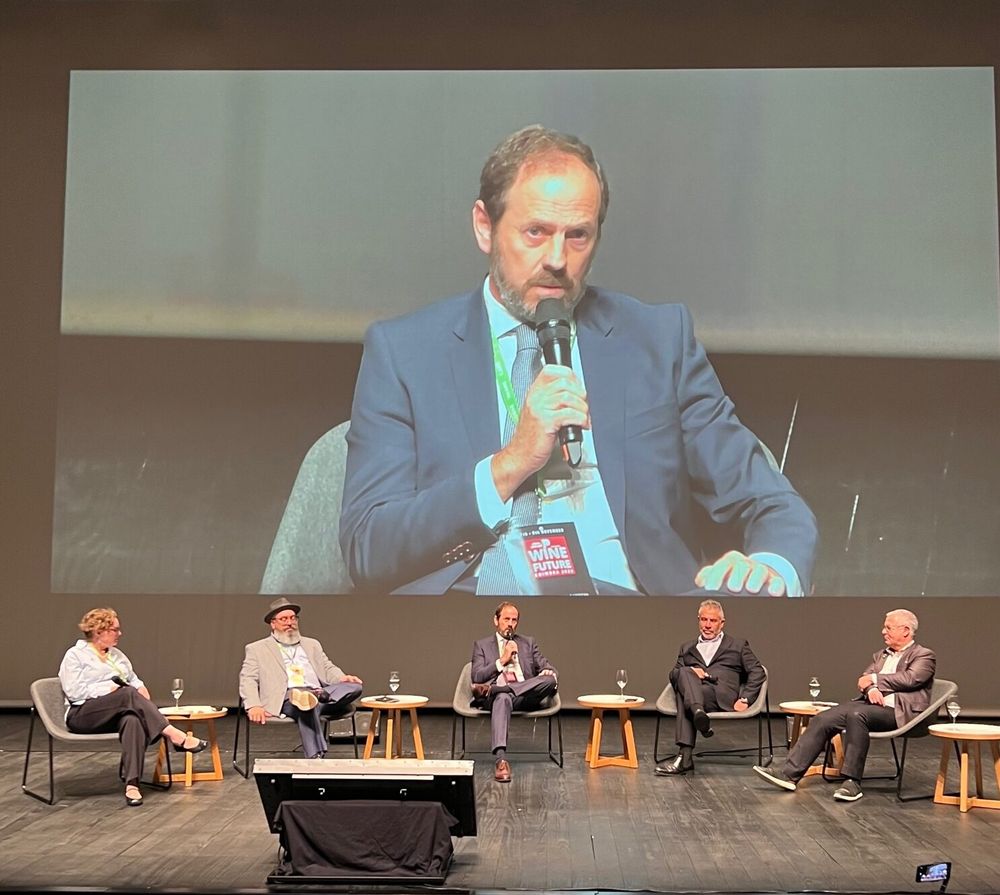
Wine Future 2023 was made possible by the support and investment of Wines of Portugal and the vision of president Frederico Falcão
The other big constant from 2009 to 2023 is Pancho Campo and all members of his Chrand Events management team. It is thanks to their efforts and ambition that these events happen at all – this year backed by the vision, support and investment of head sponsor, Wines of Portugal, and its president Frederico Falcão. The wine industry owes them a great deal.
For only by going to events like Wine Future can you truly grow as a wine trade professional.Making that commitment to travel, listen and open your eyes and ears to what leading and inspiring figures in the sector are doing, potentially giving you the tools and ideas to take home and carry forward in the businesses you run.
Wine Future Themes
Here are some of the other key themes covered at Wine Future which The Buyer will be going into more detail in the coming weeks.
Youth problem
It’s clearly essential for the industry’s future that it finds more effective ways to get younger people from more ethnic backgrounds into the category. If the alarm bells are not ringing now then they should be, warned Liz Tach. She pointed to research that shows only 9% of Gen Z drinkers (21-26) are drinking wine when they are a legal age, and of all wine drinkers 66% are white, 5% black, 11% Asian and 15 Hispanic.
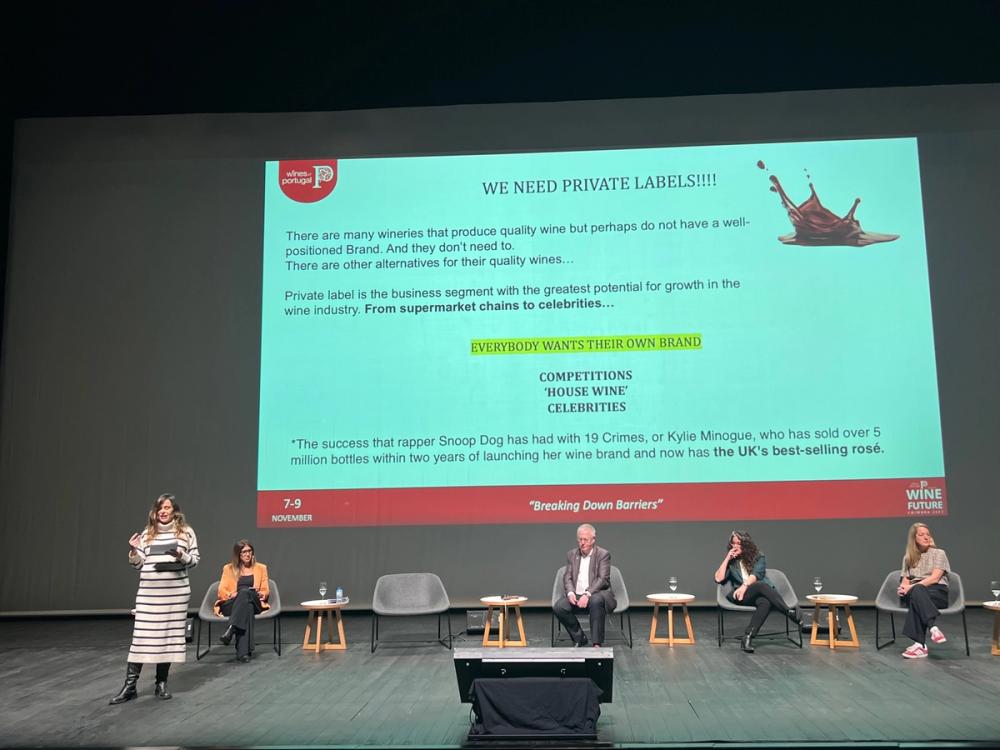
Cristina Miranda marketing manager at the World Bulk Wine Exhibition said the industry needs to embrace new packaging and innovations that are going to connect with a younger drinker that currently finds wine “boring as hell”
Cristina Miranda, marketing manager at the World Bulk Wine Exhibition, said it is essential the wine industry works out how to connect with younger consumers, or risk becoming irrelevant to them. “You have to remember wine is boring as hell to young people. It is fearful to so many of them. They just want a drink, not enter another dimension. We need to embrace the simplicity of wine.”
She is hopeful advances in new packaging, particularly cans and kegs, means wine can now be sold far more effectively at music festivals, sporting events, and the social occasions where young people are out socialising and drinking. Wine can then start being the competition to all the drinks categories that are currently taking away its market share.
Macro challenges

Wine Future included a fascinating presentation by Noble Prize winner for economics Christopher Pissarides (CZ) followed by an interview with Robert Joseph
Wine Future also looked to tackle the bigger questions around falling wine consumption and where future global sales might come from.
Interestingly the macro wine growth consumption predictions from Rafael del Ray at the Spanish Wine Observatory were in tune with where Nobel prize winner in economics, Sir Christopher Pissarides, and keynote speaker, expects future world economic growth to come from – Africa, Middle East and Latin America, albeit from very low bases.
Del Ray expects to see an even more polarised wine market between the growing premium sector with higher prices that do rely on more effective storytelling, very strong, targeted distribution and those battling it out for the mass volume, increasingly fresher in style, lower in alcohol, easy to drink wines dominated by a smaller number of bigger players sourcing more bulk wine (40% of the market in 2023 vs 33% in 2001) and private label and selling in larger numbers of sustainable packaging formats.
Rob McMillan of the Silicon Valley Bank and US technology expert, Paul Mabray, assessed the challenges and opportunities facing the US wine industry with a deep dive into into the US consumer market trends and what impact it is having on wine producers and their sales through the traditional retail and on-trade channels but also DTC at the cellar door. (The Buyer will be writing more on these issues and panel debates later in December).
Diversity and inclusion
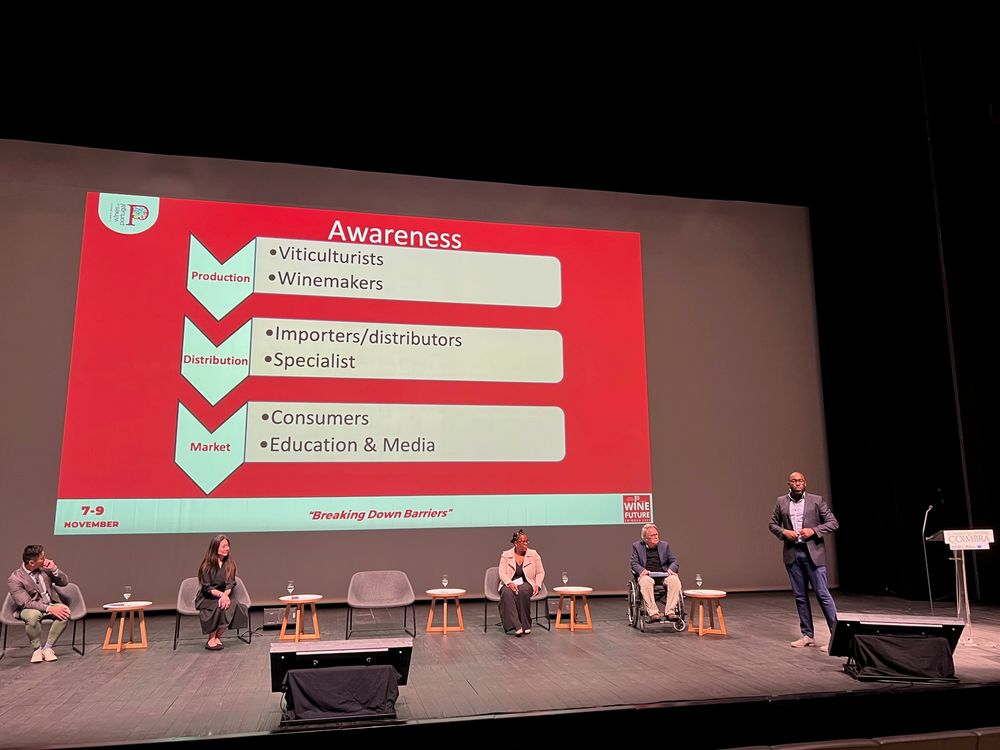
Mags Jango of MJ Wine Cellars said he hoped he would be invited to sit on other expert panels at events such as Wine Future and not just because of his ethnic background
Wine Future also addressed the issue of diversity and inclusion with an inspiring panel of business leaders, importers, wine producers from different ethnic and disabled backgrounds to assess how well – or badly – the industry is doing to support, promote and encourage more diversity and inclusion in the sector. The session featured Mags Janjo of MJ Wine Cellars in the UK,
Queena Wong of Curious Vines who shared the results of the recent attitudes survey of women working in wine, South African winemaker Ntsiki Bivela of Aslina Wines and Portuguese wine professional Bento Amaral who shared his experiences of being a person with disabilities working in the wine industry. It was moderated by Stephen Wong MW who talked about the issues facing the LGBTQ+ community in the wine industry. (The Buyer will be running an in-depth article based on the panel session at Wine Future later in the month).
Sustainability
The climate change challenge was understandably a key theme at Wine Future 2023 with Systembolaget leading the debate with a pledge to list products in 2026 by their carbon footprint and sustainability credentials – sustainable wines are already 20% of its range, said head of category management, Ulf Sjödin MW. (The Buyer will be running an in-depth article based on the sustainability sessions at Wine Future later in the month).
Technology
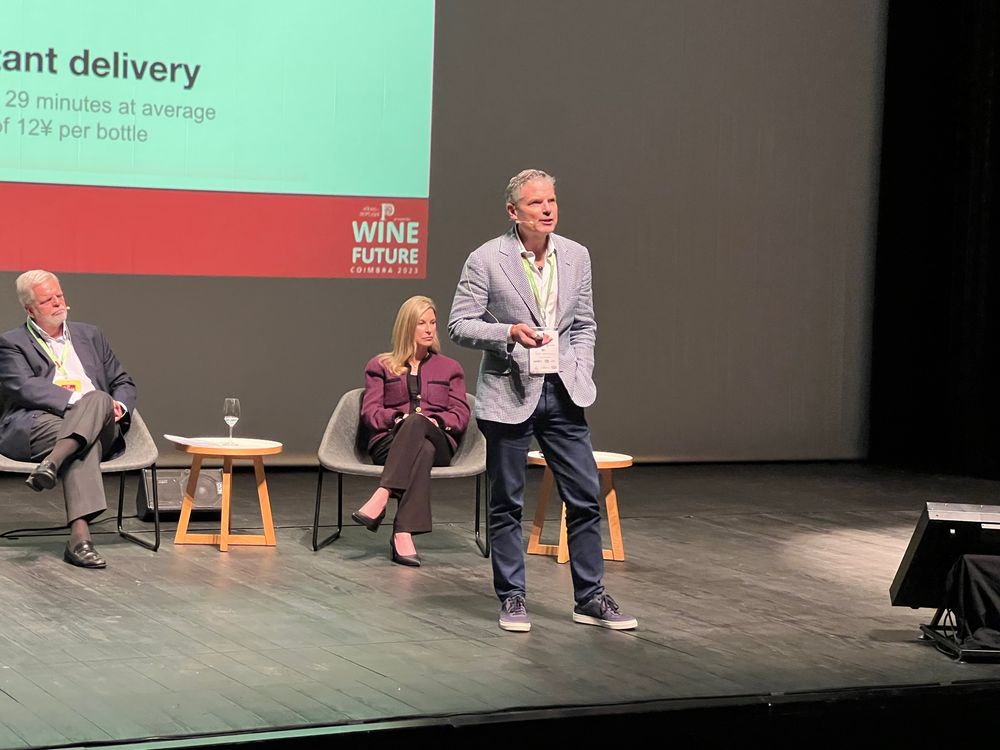
Don St Pierre said AI and technology is opening up fine wine to more consumers
Wine Future also addressed the role new technology and AI can have particularly in opening up premium and fine wine and making it more transparent and easy to access for collectors and potential investors, said Don St Pierre, a strategic advisor and specialist in the Chinese wine market with his interests in Vivino, Fine + Rare and Vinfolio.
Technology is also helping to solve the biggest issue producers have working in complex markets like China where it is pretty much impossible to know where your wine is at any one time in the supply chain.
He explained how Vivino is looking to use app technology to open up DTC-style retailing to the Chinese on-trade where venues simply don’t have the space to stock many wines. Customers can now order a wine from a venue’s wine list, via Vivino, and have it delivered via the importer to the restaurant within 30 minute. App technology solving an inventory issue, he said.
Wine Future Recordings
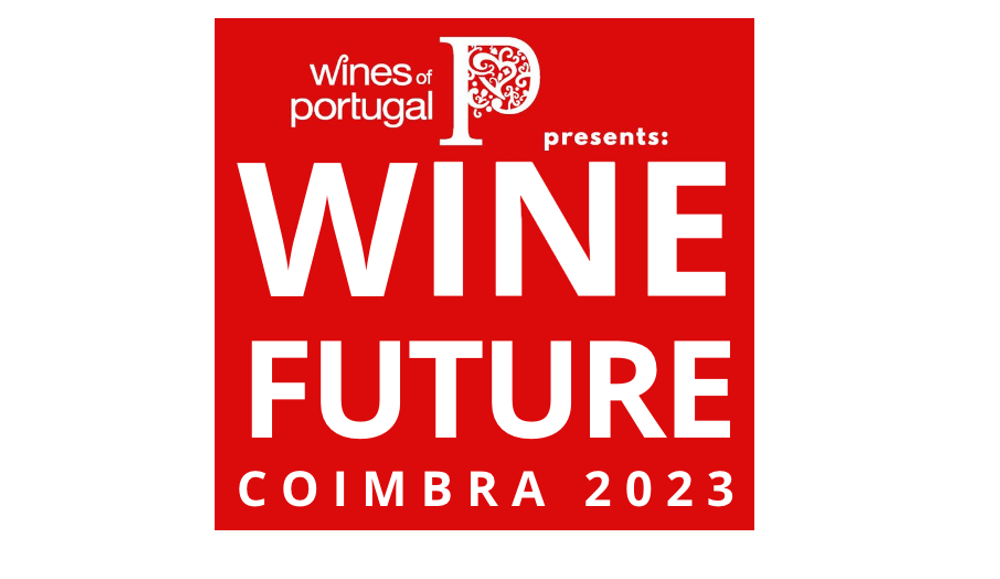
Wine Future took place in Coimbra in Portugal between November 7-9
There is now an opportunity to catch up on the main panel sessions and keynote talks at Wine Future by accessing video recordings from the event. As media partner to the event The Buyer can offer the following package for US$99 with an additional 10% discount for being a reader of The Buyer.
- The US$99 – minus 10% – package includes the full conference featuring eight panels plus five keynotes and the specialist tastings that took place at the event including: Richard Mayson on Madeira and fortified wines and Ports; The Magnificent 12 featuring 12 top wines from around the world hosted by US wine critic Mark Squires; and Icon and Premium Wines of Portugal with Dirceu Vianna Jr.
- To find out more and to sign up for the recordings click here. To get the 10% discount use THEBUYER10.
- You can find out more about Wine Future at its website here.
- The Buyer will be writing future reports from the event throughout December.
- The Buyer was one of the media partners for the event.
